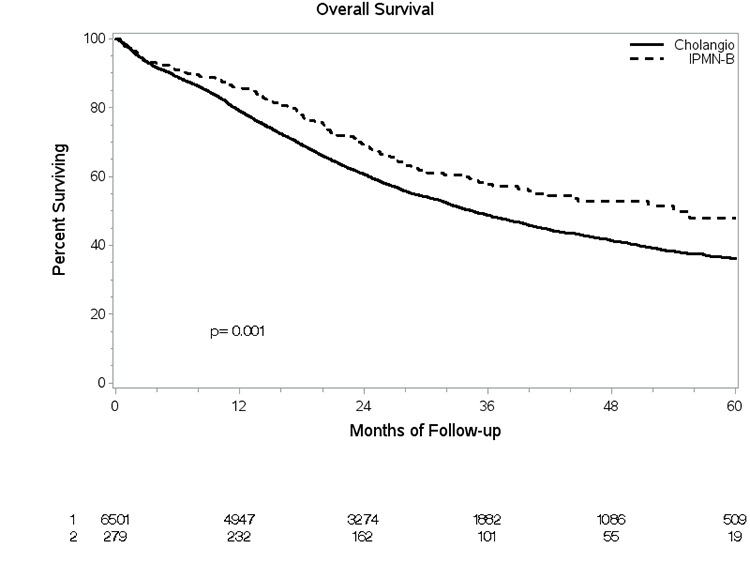|
Back to 2018 Posters
IMPROVED OVERALL SURVIVAL WITH INTRADUCTAL PAPILLARY MUCINOUS NEOPLASM OF THE BILE DUCT: ANALYSIS OF A LARGE NATIONAL CANCER REGISTRY
Clancy J. Clark1, Perry Shen1, Laura Enomoto*1, Michael Kuncewitch1, Rishi Pawa2
1General Surgery, Wake Forest Baptist Health, Winston Salem, NC; 2Gastroenterology, Wake Forest Baptist Health, Winston, NC
Introduction:
Bile duct cancer with papillary and mucinous features on histology are a rare variant of cholangiocarcinoma that may have similar clinical characteristics with intraductal papillary mucinous neoplasm of the pancreas and thus has been referred to as intraductal papillary mucinous neoplasm of the bile duct (IPMN-B). Our understanding of this disease is limited to case reports and small single institution experiences. The aim of the current study was to characterize the clinicopathologic features of IPMN-B using a national cancer registry.
Design:
A retrospective comparative cohort study was completed using the 2004-2015 American College of Surgeons National Cancer Database (NCDB). All patients who underwent curative surgery for histologically confirmed cancer of the intrahepatic, perihilar, and extrahepatic biliary tree were identified. IPMN-B subtype was identified and compared with cholangiocarcinoma. Overall survival was summarized using Kaplan Meier method.
Results:
6,780 eligible patients were included in the study cohort. 279 patients (median age 67; 41.9% female) with IPMN-B underwent surgery with curative intent. The majority of tumors were AJCC Stage I or II (75.6%), grade 1 or 2 (67.7%) and located at the ampulla of Vater (67.0%) or extrahepatic biliary tree (31.2%). At time of surgery, positive margin was uncommon (12.5%) and 30- and 90-day mortality were 4.7% and 7.2%, respectively. Compared with cholangiocarcinoma, IPMN-B has significantly improved overall survival after resection (log-rank, p = 0.001).
Conclusion:
While only a small number of patients with bile duct cancer undergoing resection have IPMN-B (4%), this rare tumor has improved overall survival compared with cholangiocarcinoma.

Overall survival after resection of cholangiocarinoma vs intraductal papillary mucinous neoplasm.
Back to 2018 Posters
|

